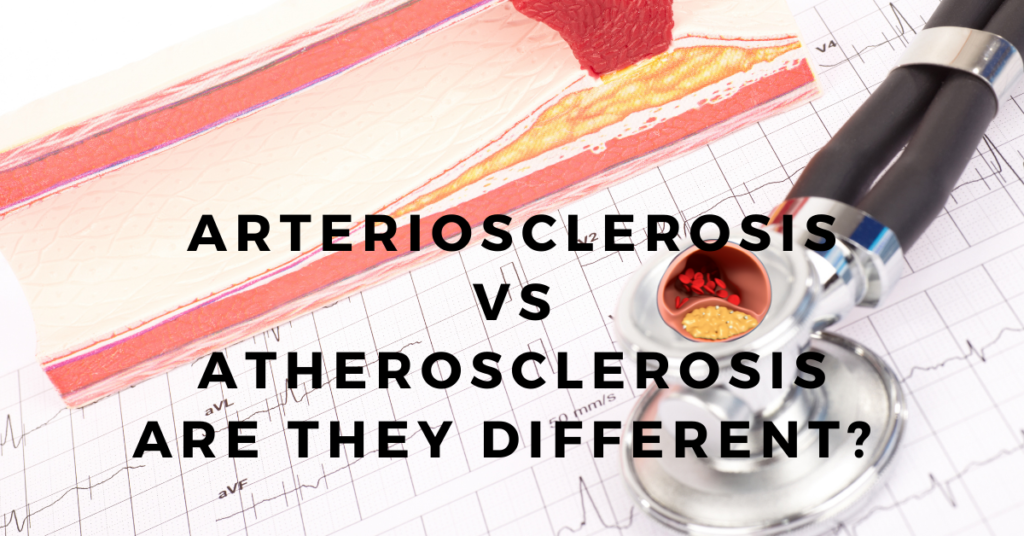Arteriosclerosis Vs Atherosclerosis are two conditions that are often referred to interchangeably. The fact is that there are some differences between the two.
Learn more here!
If you are wondering whether they are the same thing or different, the answer is in this article.
Arteriosclerosis is a condition in which the arteries that carry oxygen – rich blood from your heart to the rest of your body harden and stiffen, Which limiting blood flow to your organs and tissues. Normal arteries are flexible and elastic, but the walls of your arteries can harden over time, a disease known as artery hardening.
Atherosclerosis is a type of arteriosclerosis that causes fat deposits to build up on the inner lining of the artery walls. The fat can clog up the arteries and narrow them. In extreme cases, this can cause a complete blockage of blood flow to certain parts of the body such as brain, heart or leg muscles. Atherosclerotic plaques may also lead to blood clot formation (thrombus) which can completely block off blood flow or break off and travel to other parts of the body resulting in tissue damage (embolism).
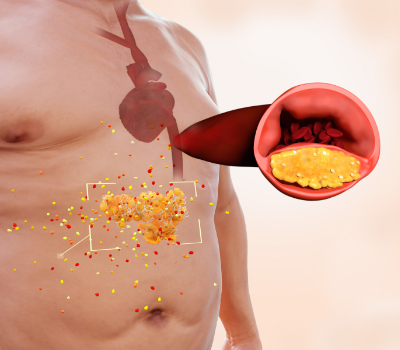
Although atherosclerosis is commonly associated with the heart, it can damage arteries throughout the body. Atherosclerosis is a disease that can be treated. Atherosclerosis can be prevented by adopting a healthy lifestyle.
Arteriosclerosis Vs Atherosclerosis: Symptoms
Mild atherosclerosis is characterised by the absence of symptoms.
Atherosclerosis symptoms normally don’t appear until an artery has constricted or clogged to the point where it can’t flow adequate blood to the organs and tissues. A blood clot can sometimes totally block blood flow or even break apart, resulting in a heart attack or stroke.
Depending on which arteries are compromised, the symptoms of moderate to severe atherosclerosis vary. Consider the following scenario:
When you have atherosclerosis in your Coronary arteries, Which supplies blood to heart muscle, you may have symptoms, including chest pain or pressure in chest (known as angina).
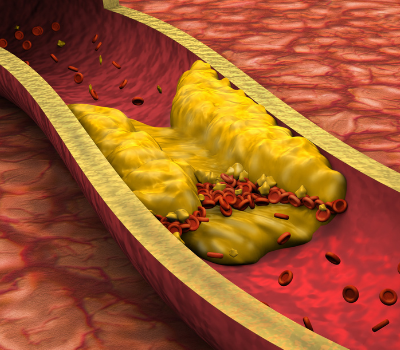
When you have atherosclerosis in the arteries supply blood to brain, you may have symptoms which including sudden numbness or lack of strength in your limbs, speech difficulties or slurred speech, temporary loss of vision in one eye, or puffy muscles in your face. The above symptoms indicate a transient ischemic attack (TIA), which can lead to a stroke if left untreated.
When you have atherosclerosis in the arteries gives blood to arms and legs, you may have signs or symptoms of peripheral artery disease, which including knee pain when walking or lower blood pressure in an affected limb.
When you have atherosclerosis in the arteries providing blood to kidneys, you may suffer from high blood pressure or kidney failure.
Arteriosclerosis Vs Atherosclerosis: Causes
Atherosclerosis is a chronic, slow-moving illness that can start in childhood. Although the specific cause of atherosclerosis is uncertain, it is thought to begin with damage or injury to the internal lining of an artery. The following factors may contribute to the damage:
Blood pressure that is too high
Cholesterol levels are high.
High triglycerides, a type of fat in your blood
Smoking and use of tobacco products
Obesity, diabetes, or insulin sensitivity
Inflammation caused by an unknown aetiology or disorders including arthritis, lupus, dermatitis, or inflammatory bowel disease.
Blood cells and other components clump at the injury site and build up in the inner lining of the artery once the inner wall of the artery is injured.
At the injury site, fatty deposits, known as plaque formed of cholesterol and other cellular substances accumulate over time, narrowing your arteries. Organs and tissues connected to blocked arteries receive insufficient blood to work efficiently.

Fragments of the fatty deposits may eventually break off and enter your bloodstream.
Furthermore, the plaque’s smooth lining may tear, releasing cholesterol and other substances into the blood circulation. It can result in a blood clot, which can stop blood flow to a specific portion of your body, such as when blood flow to your heart is obstructed, resulting in a heart attack. A blood clot also can spread to other places of your body, obstructing blood flow to an organ.
Arteriosclerosis Vs Atherosclerosis: Risk Factors
Atherosclerosis is the hardening of the arteries over time. Apart from age, the following factors may increase your chances of atherosclerosis:
Blood pressure that is too high
Cholesterol levels are high.
C-reactive protein (CRP) levels that are too high are a sign of inflammation Diabetes
sleep deprivation
Tobacco usage, including smoking and chewing
A family history of heart disease
Lack of physical activity
Unhealthy eating habits
Arteriosclerosis Vs Atherosclerosis: Complications
The severity of atherosclerosis problems is determined by which arteries are occluded. Consider the following scenario:
Coronary artery disease is a condition that affects the arteries of the heart , that can trigger chest pain, a heart attack, or heart failure, develops when atherosclerosis narrows the arteries adjacent to the heart.
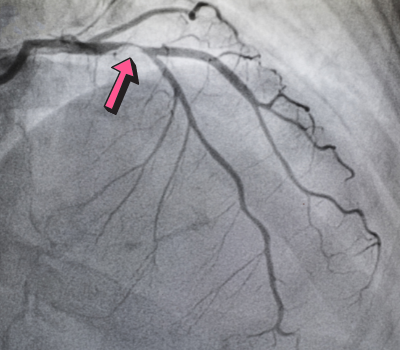
Carotid artery disease is a condition that affects the arteries in the neck. When atherosclerosis narrows the arteries leading to your brain, it’s known as cerebral atherosclerosis results in stroke.
Peripheral artery disease is a condition that affects the arteries in the When the arteries in your arms or legs narrow due to atherosclerosis.
Aneurysms An aneurysm is a bulge in the wall of your artery. You may have life-threatening internal bleeding if an aneurysm rupture.
Chronic Kidney disease caused by narrowing of blood vessel which supply blood to Kidney
When should you see a doctor?
High cholesterol, high blood pressure and smoking are risk factors for arteriosclerosis/atherosclerosis. If you are at high risk because of lifestyle or family history ask your doctor whether you should be screened earlier and more often.
You can see your primary care doctor if you have symptoms. They will do a physical exam. You may also need to get some blood tests done. If you’re having an issue that needs immediate medical attention, go to the emergency room.
Prevention
The healthy lifestyle adjustments that are advocated for treating atherosclerosis are also beneficial in preventing it. These are some of them
Smoking withdrawal
Intake of nutritious foods
Regular exercise is essential.
Keeping a healthy weight is important.
Blood pressure should be checked and maintained at a healthy level.
Keeping a healthy cholesterol and blood sugar level is important.
Maintaining enough Sleep on time.
Diagnosis
Blood tests, Electrocardiogram (ECG or EKG).
Exercise stress test (Treadmill).
Echocardiogram.
Doppler ultrasound.
Cardiac catheterisation and angiogram.
Other imaging tests. Magnetic resonance angiography or
positron emission tomography (PET)
Lifestyle and home remedies
Lifestyle changes can help you prevent or slow the progression of atherosclerosis
These steps can improve your health overall and help protect against other conditions:
Stop smoking. Smoking causes plaque build-up and narrows the arteries, making them more susceptible to damage.
Eat a healthy diet. A heart-healthy diet includes plenty of fruits and vegetables, whole grains and fish, nuts, seeds and legumes; limits saturated fats; and is low in salt and sugar.
Increase physical activity. Exercise benefits the heart by helping you maintain a healthy weight — or achieve a healthy weight if you’re overweight or obese — while lowering blood pressure, cholesterol levels and blood sugar levels. An inactive lifestyle contributes to atherosclerosis.
Control cholesterol levels. Lifestyle changes that lower cholesterol include eating foods with less saturated fat (meat, poultry skin, dairy products) and trans-fat (baked goods). Avoiding foods with partially hydrogenated oils, getting more fibre (fruits, vegetables, whole grains), exercising regularly, not smoking, drinking alcohol only in moderation, and losing weight if you’re overweight or obese. If these lifestyle changes aren’t enough to reach ideal cholesterol levels (<200)
Treatment
Lifestyle modifications, including as eating a balanced diet and exercising, are the first line of defence against atherosclerosis, and they may be all you need. However, medicines or surgical procedures may be required in some cases.
Medications
- Statins and other cholesterol medications.
- Blood thinners.
- Blood pressure medications.
- Other medications. Other medications may be prescribed by your doctor to treat health problems that increase your risk of atherosclerosis, such as diabetes. Specific drugs for atherosclerotic symptoms, such as knee pain during activity, may also be provided.
Surgery and other procedures
A more aggressive approach to treating atherosclerosis may be required. Your doctor may consider one of the following medical procedures if you have significant symptoms or an obstruction:
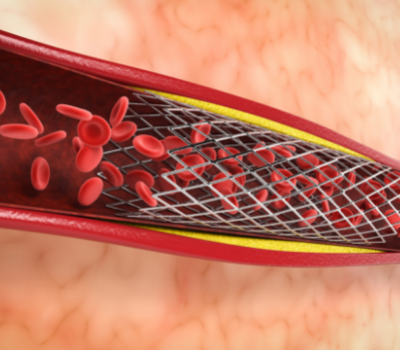
Angioplasty and stent placement.
Endarterectomy.
Fibrinolytic therapy.
Coronary artery bypass surgery.

